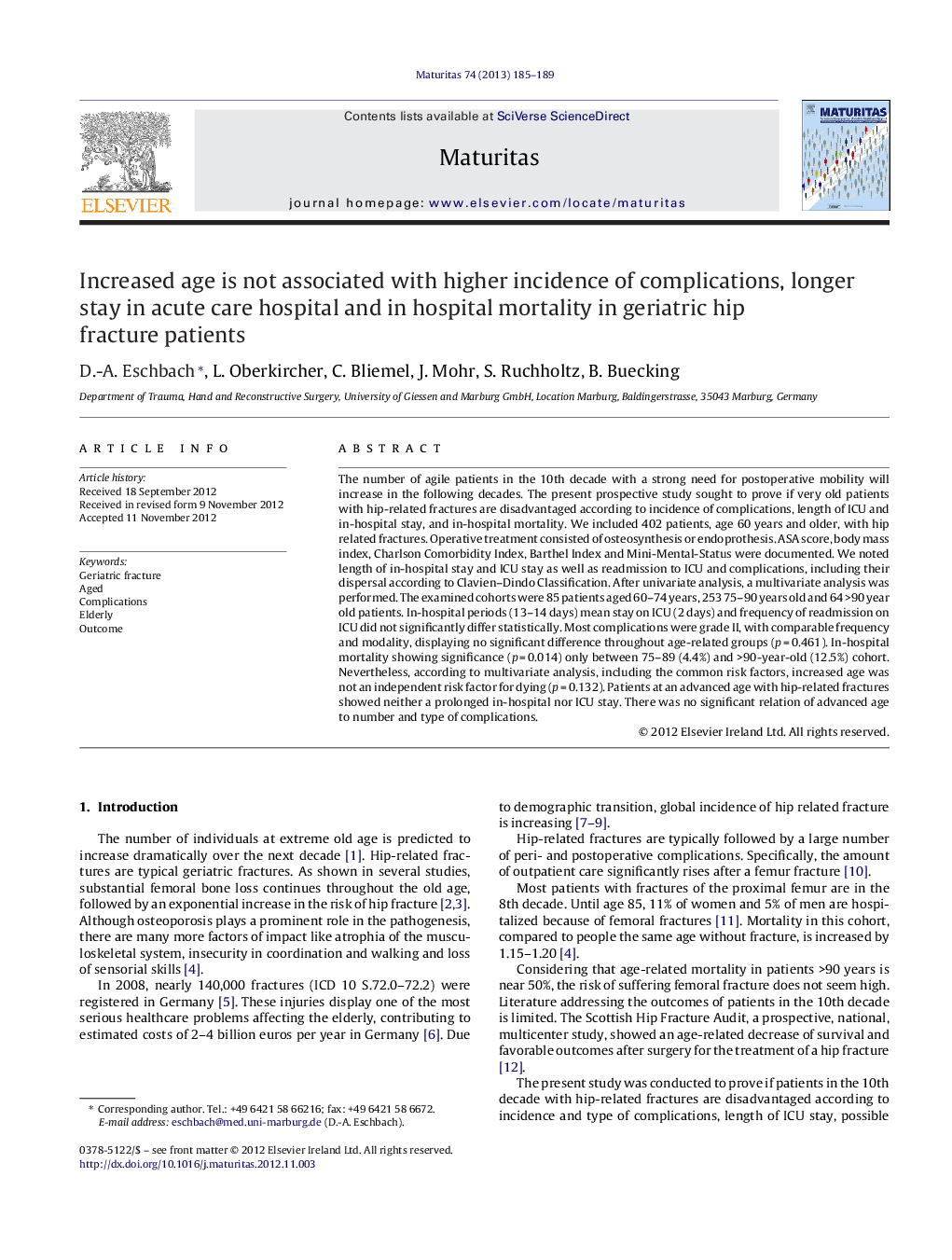| Article ID | Journal | Published Year | Pages | File Type |
|---|---|---|---|---|
| 10743653 | Maturitas | 2013 | 5 Pages |
Abstract
The number of agile patients in the 10th decade with a strong need for postoperative mobility will increase in the following decades. The present prospective study sought to prove if very old patients with hip-related fractures are disadvantaged according to incidence of complications, length of ICU and in-hospital stay, and in-hospital mortality. We included 402 patients, age 60 years and older, with hip related fractures. Operative treatment consisted of osteosynthesis or endoprothesis. ASA score, body mass index, Charlson Comorbidity Index, Barthel Index and Mini-Mental-Status were documented. We noted length of in-hospital stay and ICU stay as well as readmission to ICU and complications, including their dispersal according to Clavien-Dindo Classification. After univariate analysis, a multivariate analysis was performed. The examined cohorts were 85 patients aged 60-74 years, 253 75-90 years old and 64 >90 year old patients. In-hospital periods (13-14 days) mean stay on ICU (2 days) and frequency of readmission on ICU did not significantly differ statistically. Most complications were grade II, with comparable frequency and modality, displaying no significant difference throughout age-related groups (p = 0.461). In-hospital mortality showing significance (p = 0.014) only between 75-89 (4.4%) and >90-year-old (12.5%) cohort. Nevertheless, according to multivariate analysis, including the common risk factors, increased age was not an independent risk factor for dying (p = 0.132). Patients at an advanced age with hip-related fractures showed neither a prolonged in-hospital nor ICU stay. There was no significant relation of advanced age to number and type of complications.
Related Topics
Life Sciences
Biochemistry, Genetics and Molecular Biology
Ageing
Authors
D.-A. Eschbach, L. Oberkircher, C. Bliemel, J. Mohr, S. Ruchholtz, B. Buecking,
